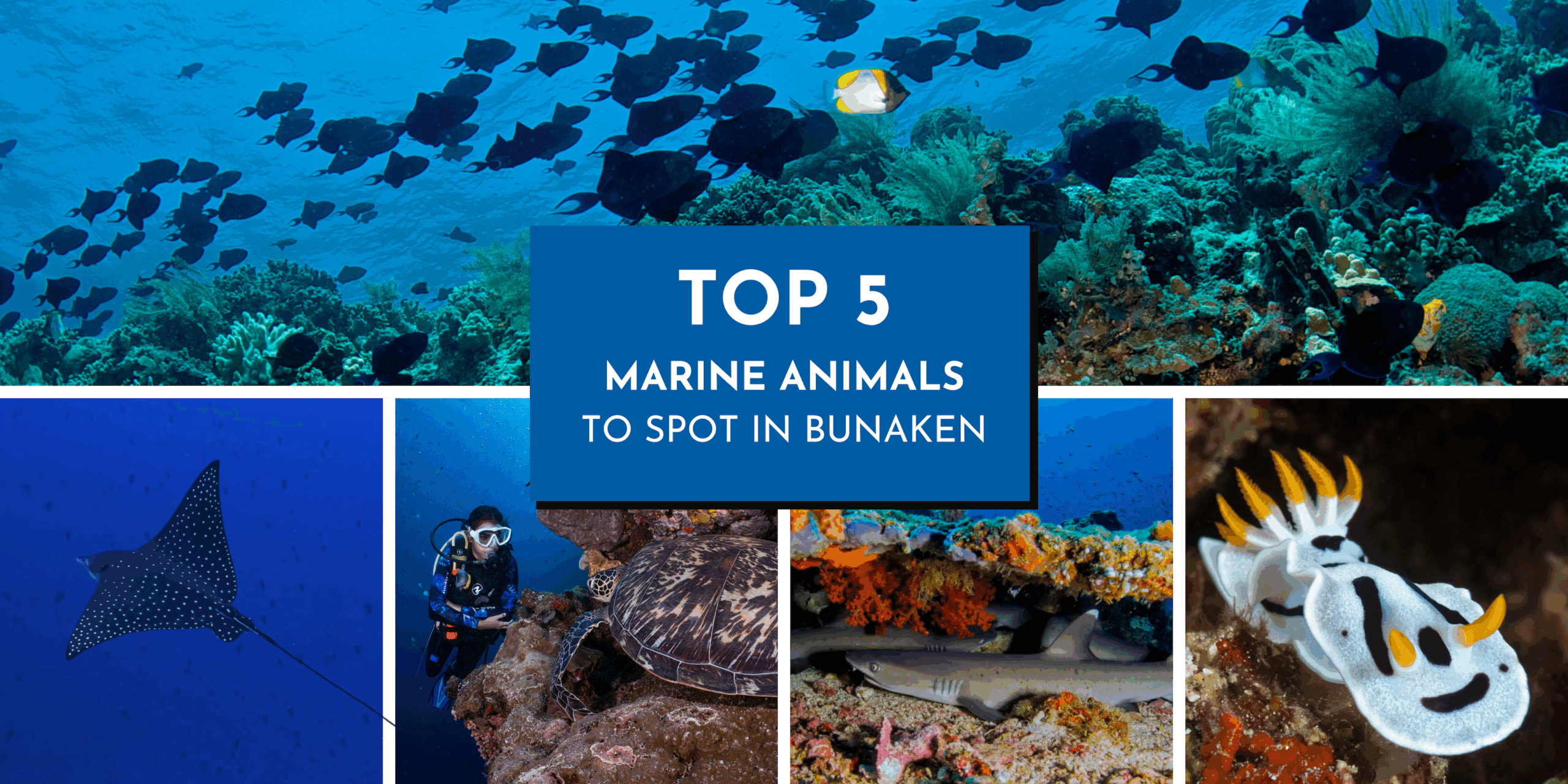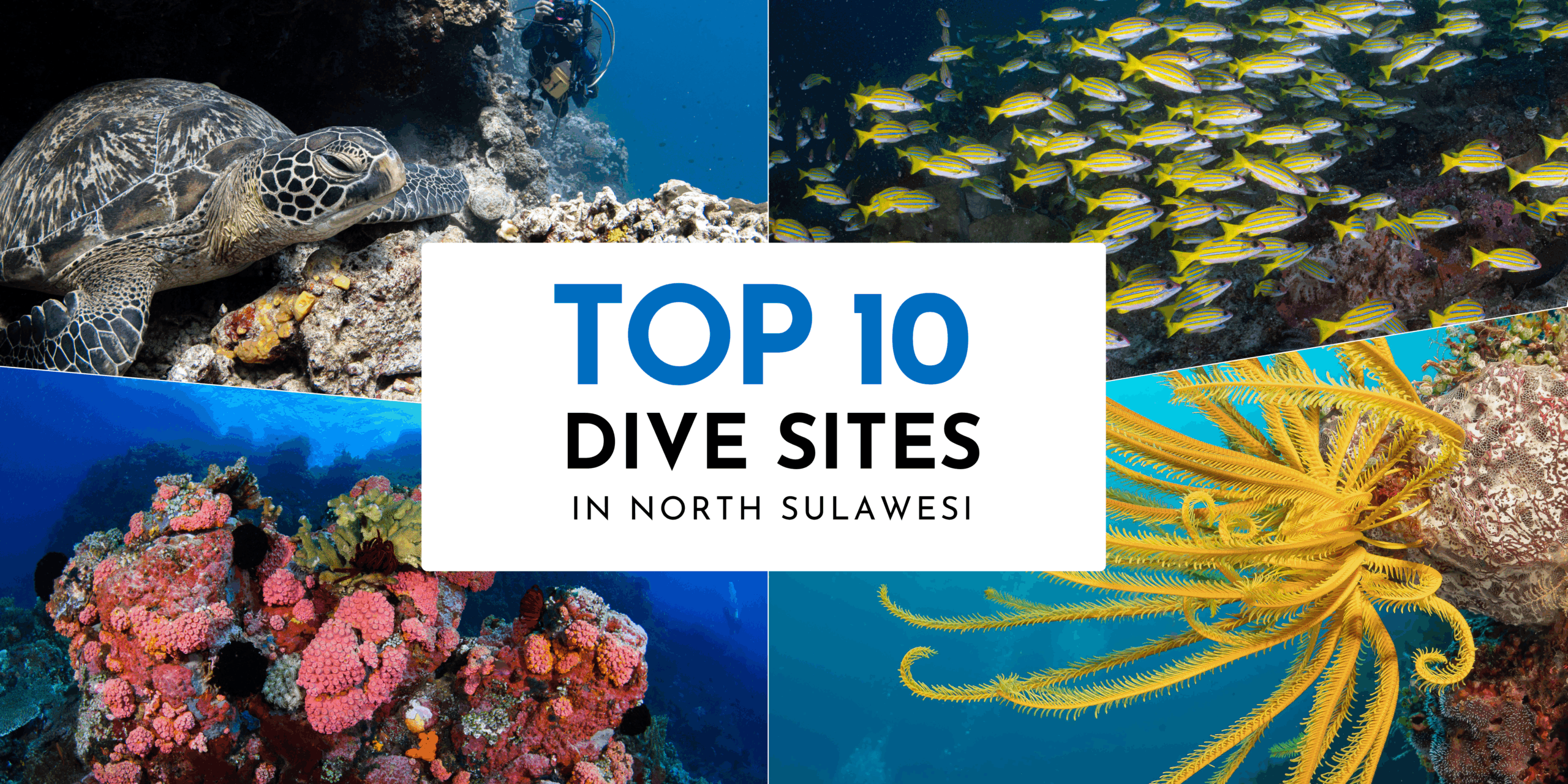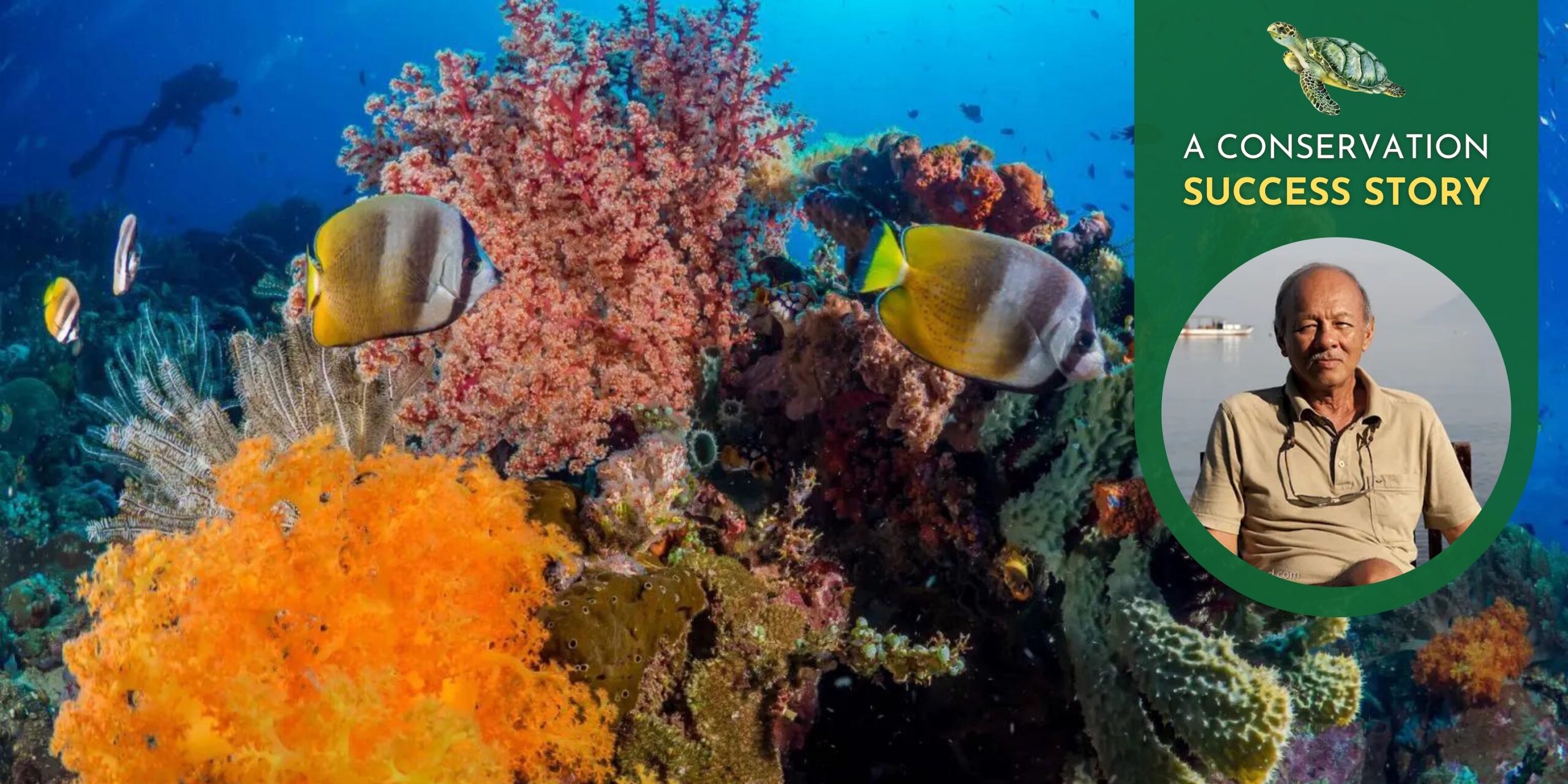Ultimate Guide to Nudibranch of North Sulawesi – Part I
Here in North Sulawesi we are extremely fortunate to have a wide range of nudibranch species that we see throughout the year. If nudibranch are known as the “Jewels of the Sea”, then North Sulawesi must be a treasure trove!
We simply can’t fit all of our favorite species in one Blog so this is just Part I of our Ultimate Guide. Many of these species you may recognize but hopefully, we will also be able to show you some new species (and tips for identification) to whet your appetite for your next stay with us.
Nudibranch species of North Sulawesi
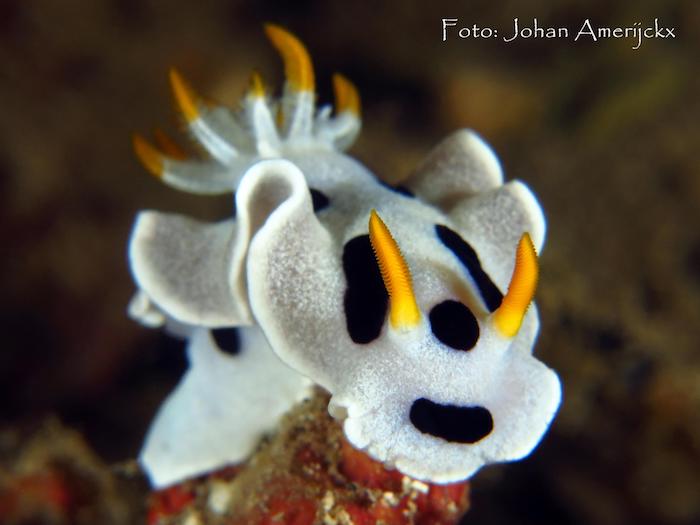
Chromodoris dianae in the Bunaken Marine Park
Chromodoris dianae
Chromodoris dianae can reach a maximum length of 4 cm and these are one of the most common species which we see throughout the year on most of our wall diving sites in Bunaken. The elongated body has a foot which is distinct from (and partially hidden by) the mantle. This species is very similar in appearance to Chromodoris lochi although the two can be distinguished by the broken black lines on this species, (as opposed to continuous black lines of Chromodoris lochi). Chromodoris dianae has pale-blue gills and rhinophores with distinct yellow-orange tips. This species is a sponge feeder which explains the frequent sightings we have in Bunaken where sponges thrive.
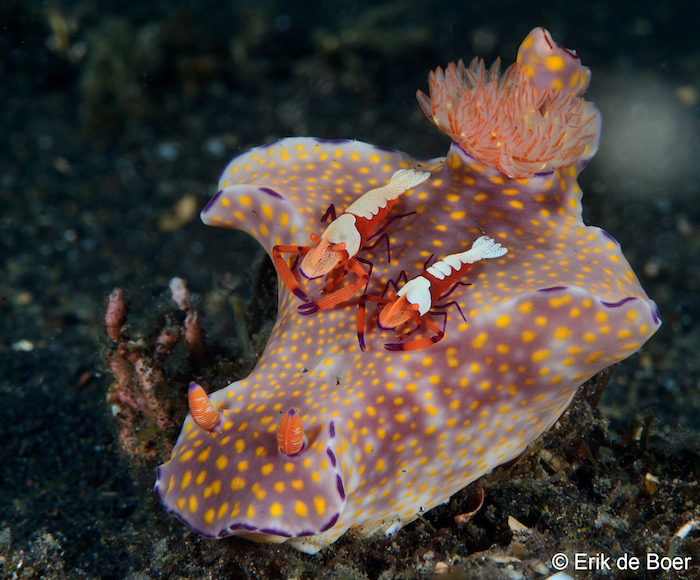
Ceratosoma nudibranch with emperor shrimps
Ceratosoma tenue
This species of colorful dorid nudibranch is known as a “T-Bar” nudibranch due to it’s distinctive T shaped body. The “T” shape actually comes from the toxic, elongated skin flap which covers and protects this nudibranch’s gills.
This is a larger species of nudibranch which can grow up to 15 cm in length. The base color of the body is orange to yellow with a broad mantle with 2 to 3 lobes which are outlined in white and have a series of blue or purple dots.
The behavior shown here, with emperor shrimps “riding” on the back of the nudibranch is not uncommon. The shrimps and the nudibranch live in symbiosis with the emperor shrimps cleaning the nudibranch in return for food and transport! The best dive sites for sightings of this “T-Bar” nudibranch are Tanjung Papaya in Manado Bay and Sahaung at Bangka Island.
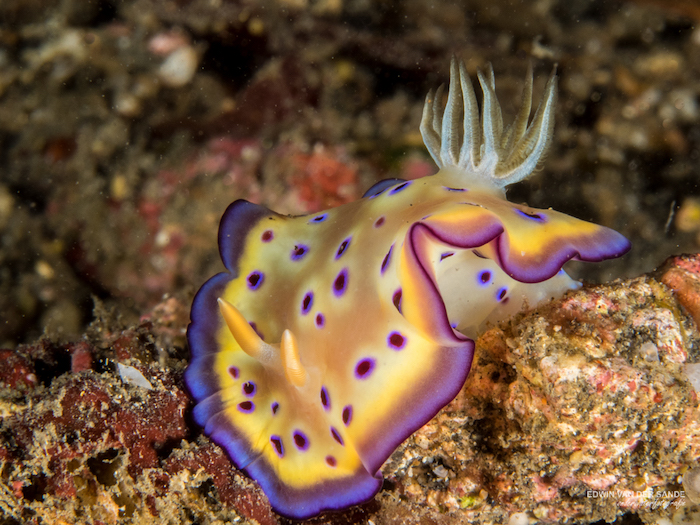
Chromodoris kuniei – note the wide purple and blue border on the mantle
Chromodoris kuniei
Chromodororis kuniei is a smaller species of nudibranch which grows up to just 4cm and has a pattern of blue spots with pale blue “halo’s” on a creamy mantle. There is a wide double border to the mantle of purple and blue.
This species feeds on sponges and soft corals and can be found at shallow depths of just 5 meters, down to 40 meters.
This is a relatively common species which extremely popular with underwater photographers due to it’s striking color and ornate patterning. We see Chromodororis kuniei around the Bunaken Marine Park, Bangka and Manado Bay throughout the year.
This species is often confused with Hypselodoris tryoni (see below), but it is actually much smaller (shorter) with a wider mantel border and the quite distinct spot and circle patterns.Compare the two images and see if you can spot the differences!
Hypselodoris tryoni
This species can be found both in sandy and coral areas. This is an interesting species of nudibranch to observe and it is often seen in pairs displaying “tailing” behavior, where one nudibranch follows another in head to tail formation. The video above shows this behavior.
It is a distinctive nudibranch with a high-profile body with purple spots encircled in white patches dotting its cream coloured mantle. They can have several spots within the white areas at the edge of the mantle and foot. They have a thin blue line on the rhinophores and gills with yellow, pink or purplish toning. They are a common species with a body length up to approx. 90 mm.
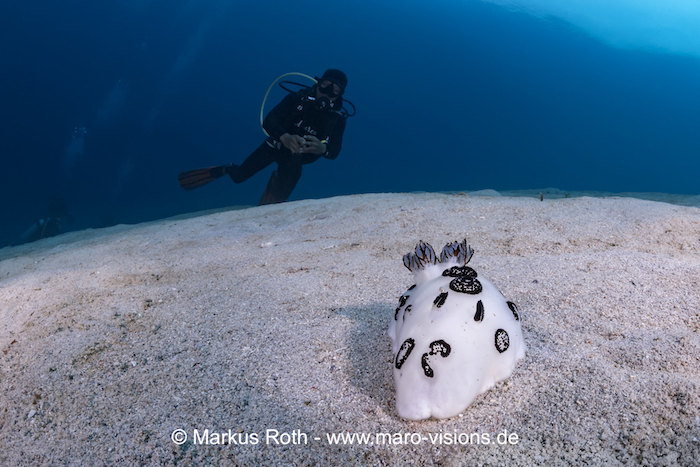
Jorunna funebris at Circus dive site, Manado Bay
Jorunna funebris
This nudibranch species is also known as the “Panda Nudibranch” due to the distinctive black circles which cover it’s body. It has a white base color and black rings and gills. The rhinophores are a distinctive black color and the body (especially the black rings) has a fuzzy-like appearance. This nudibranch can have a body size of up to 10cm and it favours sandy substrates with sea grasses, algae and soft corals.
We see this nudibranch only occasionally and the best dive sites for sightings are around Manado Bay and on some of the shallow rubble and sand patches on Bangka’s reef tops.
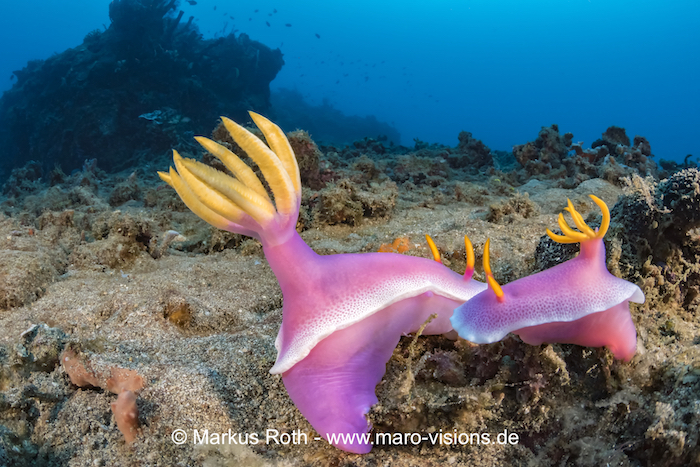
Hypselodoris Apolegma is one of the most vibrant colored species of nudibranch in North Sulawesi
Hypselodoris Apolegma
There is no mistaking the bright, vivid colors of the Hypselodoris apolegma! This vibrant species is a common sighting around Bunaken and Bangka Island throughout the year. The body color of this species ranges from a pastel pink through to an almost fluorescent purple with a white border to the mantle. At the edge of the mantle the border is solid white but inside this is a region of varying width in which the white forms a reticulate pattern gradually merging into the pinkish purple.
The rhinophore stalks and the base of the gills are an intense purple, while the rhinophore clubs and the gills themselves are a bright orange-yellow. This species grows up to around 10cm in length.
We often see Hypselodoris Apolegma with egg ribbons – which are a matching orange-yellow color to that of the gills and rhinophore clubs.
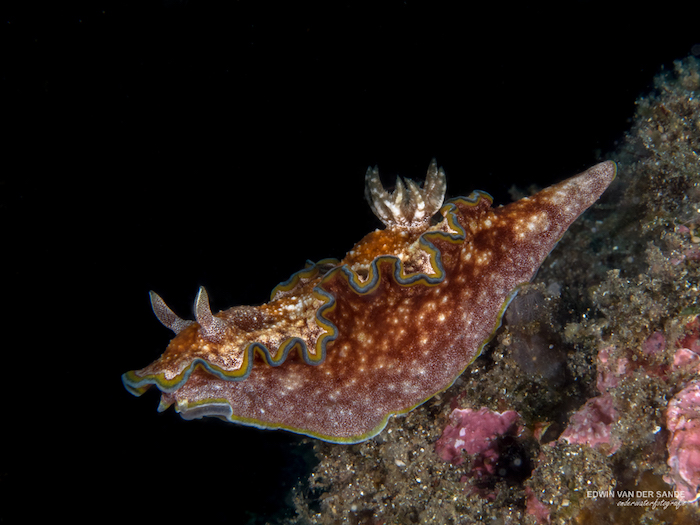
Glossodoris Cincta has a grainy skin appearance and tri-colored border to the mantle
Glossodoris cincta
This species is also known as the “girdled glossodoris” due to the colourful banded pattern bordering its mantle.
Glossodoris cincta is usually found on patch reefs and beneath coral rubble. Widespread nudibranch with differing regional color patterns. The Indonesian color variation has a brownish body dotted in white, with double yellow and blue rim around the outer edge of the mantle. The texture of the body on the skin on this nudibranch often appears “grainy” and it can grow up to 8cm in length.
The best dive sites for spotting the girdled glossodoris are Tanjung Papaya in Manado Bay and Murex Manado House Reef.
Stay Tuned for more Nudinbranch Species
With such healthy reefs and some of Indonesia’s best dive sites, nudibranch thrive here all year round. Take a look at part 2 of this series below:
Do you want to see all that North Sulawesi has to offer in one incredible trip? Join us on a Passport to Paradise and dive Bunaken -> Bangka -> Lembeh in one phenomenal holiday. Experience the staggering walls and stunning corals of the Bunaken Marine Park, immerse yourself in a world of color at Bangka Island and dive the world’s best muck in Lembeh. With boat diving transfers from resort to resort you won’t have any wasted transfer days, no gear drying and no packing – just get up and dive, dive, dive!
For more information or to book your place: reservations@murexdive.com


